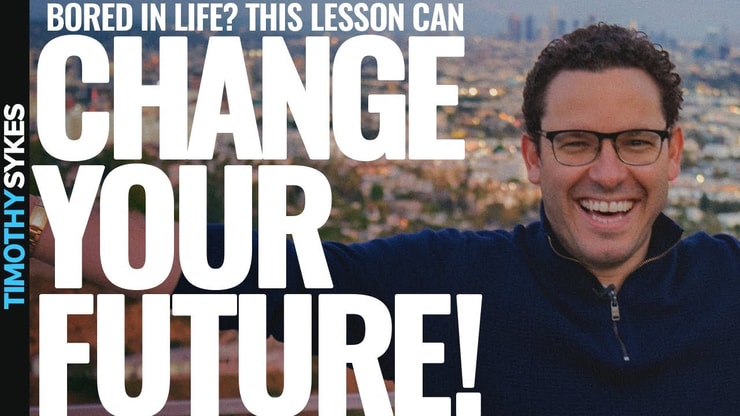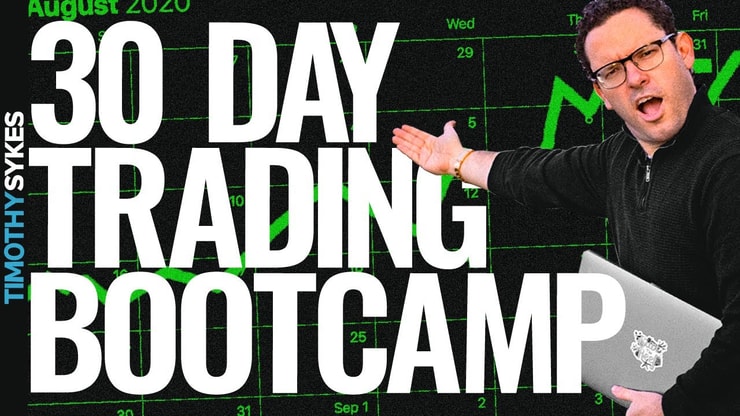There’s been a mad rush to the markets in 2020 … but, sadly, too many new traders don’t take the time to learn how to trade stocks.
Learning to trade isn’t necessarily hard. But learning to be a consistent trader can be…
I want to help newer traders learn to be consistent. Stock trading for beginners can be frustrating and challenging. Most traders lose. I want you to be successful. That’s why I created some ways for beginners to learn trading skills.
Keep in mind that trading is a marathon, not a sprint. Memorize that phrase. It will help keep you in the game. Online trading courses can also help you stay in the game.
There are many stock trading courses for beginners. I have a few of my own. My courses can teach you how to start trading and ultimately give you a chance to become a self-sufficient trader.
Keep reading to learn how to trade stocks…
Table of Contents
- 1 What Is Stock Trading?
- 2 Is Trading Stocks a Good Investment for Beginners?
- 3 Is It Hard to Learn Stock Trading?
- 4 Can You Teach Yourself to Trade?
- 5 Learn How to Trade Stocks in 4 Simple Steps
- 6 Learn How to Trade Stocks: Top Stock Trading Courses for Beginners
- 7 Trading Stocks for Beginners: Tips for Success
- 8 Frequently Asked Questions About Learning How to Trade Stocks
- 9 Conclusion: Learn How to Trade Stocks Today
What Is Stock Trading?
Before you start trading, you need to understand what it is…
Stock trading is when you buy (or short sell) shares of a publicly traded company. It’s important to know that for every buyer, there’s a seller. When you buy shares of a certain stock, there’s someone who’s selling those shares to you.
Trading and investing are two different things. Investing in stocks usually means that someone puts cash into a company’s stock for the long term. Trading isn’t long term.
I’m a trader. I trade momentum penny stocks. I get in and out of plays quickly. This means that sometimes I buy and sell within minutes. Other times, I’m in for a few hours. I occasionally hold overnight when the setup is too good to resist.
Now I teach trading so I can help others learn from my experience and find their own success. I consider myself a better teacher than a trader. Still, I’ve made over $6 million trading penny stocks.* Do you want a shot at that?
(*These results are not typical. Individual results will vary. Most traders lose money. My top students and I have the benefit of many years of hard work and dedication. Trading is inherently risky. Always do your due diligence and never risk more than you can afford to lose.)
Is Trading Stocks a Good Investment for Beginners?

As I just mentioned, I’ve made millions trading penny stocks.* One of my top students, Tim Grittani, has also made millions day trading penny stocks.*
Not everyone will have those results. But while Grittani and I aren’t the smartest people in the world, we aren’t dumb either. I think anyone can learn how to trade stocks successfully if they put in the time. It all comes down to your commitment and dedication. Are you willing to do the work?
If you’re willing to make sacrifices and put in the time, learning how trade stocks could be right for you. I can teach you what I’ve learned in 20+ years of trading and 10+ years of teaching in my Trading Challenge. Apply today. But not if you’re lazy. I don’t have time for lazy students.
Is It Hard to Learn Stock Trading?
I think learning how to buy and sell stocks is the easy part. But I’m here to teach you to learn to become a self-sufficient trader. That can be hard. I think anything worthwhile is hard.
If you want to be smarter, faster, or stronger, you have to put in the time.
Think about some of your favorite athletes. Whether you like basketball, football, soccer, tennis, or swimming, all the top athletes in those sports put in tons of time and practice.
Stock trading is no different. If you want to succeed, then put in the time. It won’t happen overnight. I tell all my students to build their knowledge accounts before their brokerage accounts. If you want to find consistency, study up and learn the patterns.
Can You Teach Yourself to Trade?
I started trading about 20 years ago with about $12,500 that my parents gave me for my bar mitzvah. There were no trading teachers when I started, and that made trading extremely hard. So I had to learn everything I know now on my own … And I’ve had a lot of ups and downs along the way.
You can read it all in my book, “An American Hedge Fund.” Get your no-cost download here.
I wrote that book so that anyone can learn from my experiences to trade smarter and avoid unnecessary big losses. My biggest loss was half a million dollars! Don’t let that happen to you.
That $500K loss hurt, but it led to my #1 rule: cut losses quickly. You’ll hear me say it a million times.
So I living proof that you can teach yourself to trade stocks. But I became a teacher so I can help people like you learn more quickly. Apply to join my Trading Challenge.
Learn How to Trade Stocks in 4 Simple Steps

Learning how to trade never stops. Grittani and I have been trading for years, but we always adapt to the market. We never stop studying. Every one of my top students knows this is key to staying in the market.
Don’t get intimidated by studying. Just because it never stops doesn’t mean it doesn’t get easier. Once you learn the patterns, studying is more preparation than work.
1. Open a Brokerage Account
To start trading, you need a brokerage account…
Your trading style can help you determine which brokerage to pick. But what if you don’t know your trading style yet? If that’s the case, focus on your education first.
You can paper trade to practice strategies and trades. That will help you better understand which broker is right for your needs. (For the record, I trade with these brokers and these rules.)
I don’t recommend using flashy brokers like Robinhood. This newer broker is attracting a number of newbies this year. I think they lure in newbies with ‘easy trading’ and a gamified app. But it’s ultimately your choice. So do your research.
And stay away from offshore brokers! You might not have to worry about the pattern day trader (PDT) rule with them, but don’t risk your hard-earned cash! Read up on the PDT rule — and why I think it’s a good thing — here.
2. Study
The best way to succeed in this volatile market is to be prepared. I teach my students to react to the market. Don’t play guessing games.
I’ve seen some crazy rallies in this market. My patterns work in bull markets and bear markets. Study and prepare so you can learn how to trade stocks through any kind of market.
I know day trading penny stocks isn’t the best strategy for everyone. Maybe you’re interested in long-term investments or options trading. But no matter what you want to do, studying is mandatory.
More Breaking News
- RB Global’s Upcoming Q3 Results: A Catalyst for Stock Dynamics?
- From Underdog to Top Performer: How Endeavour Silver Outpaced Expectations
- LexinFintech Holdings: Analyzing the Rising Tide
3. Practice Trading
After you put in your time studying, you can start practicing your trading. There’s more than one way to practice…
Paper trading and trading with a small position size are two good methods…
Paper trading is a cool new way to practice trading. There are a lot of tools and platforms for paper trading, but my favorite is on StocksToTrade.
(Full disclosure: I helped develop StocksToTrade and I’m a major investor. That said, it’s my dream stock-scanning tool. It’s designed to help save time in finding the best stocks that fit my patterns and strategy.)
StocksToTrade is a stock-screening platform I helped design. So it fits my penny stock trading strategies. It’s helped my trading profits grow exponentially, especially in 2020. I use it every day, and I think it’s a smart tool for every trader to use.
The paper trading tool on StocksToTrade allows you to enter and exit trades without risking hard-earned cash. It can help you learn patterns and understand the market. One downside? You won’t experience the emotions that come with real trading.
That’s why my other strategy for practice is trading with a small position size. When you have a small position, you can feel the emotions involved in real trading because you’re using real money. It’s good to start with a small size so you don’t lose a lot of money.
Every new trader loses in the beginning. You have to get used to it.
Trading with a small position size is a great way to practice cutting losses quickly. If the trade isn’t going how you planned, get out and dissect what went wrong.
It’s good to keep a trading journal for your entire career. It’s how you can see which patterns are working for you in the current market…
4. Trading for Real
I think this is the best way to learn how to trade stocks. Once you feel comfortable with your practice trading, you can start trading for real. But go slow. No matter how comfortable you feel, never risk too much on any single trade. Always trade scared.
Your trading journal will help you figure out where and when you can start sizing up because you’ll know which patterns work for you.
I consider myself a retired trader. I only come out of retirement when the setup is too good to pass up.
One of my favorite patterns is the morning panic dip buy. Whenever I see this setup with all seven indicators detailed in my book, “The Complete Penny Stock Course,” I use a bigger position size. (I still lose about 25% of the time, though.) And I always cut losses quickly if the trade goes against me.
If you want to learn how to trade stocks by using the seven indicators, read “The Complete Penny Stock Course.” My student Jamil compiled all my lessons into this awesome resource. It can help you learn how to trade stocks. It outlines the basics of trading penny stocks, patterns, rules, and much more.
Now let me tell you more about a few resources I’ve developed as a trading teacher and mentor…
Learn How to Trade Stocks: Top Stock Trading Courses for Beginners
I want to explain why I love the Trading Challenge so much.
The Trading Challenge is my top resource for dedicated students. It’s where you can learn how to trade stocks the way my top students and I do. It includes access to my chat room, video lessons, DVDs, webinars, and much more.
The chat room is one of my favorite parts of the Challenge. It’s a great place to connect with other traders and learn. It’s also a great place to find mentors. Some of my top students, like Grittani and Michael Goode, mentor students and help them learn how to trade stocks.
Spending a little cash to join the Challenge isn’t enough. You have to put in the time and dedication. Don’t expect to become an instant millionaire. That’s not reasonable or what I teach.
I teach to help students learn to be self-sufficient traders. This means that they don’t follow buy or sell alerts. They execute trades on their own.
I’ve seen many traders make money too fast by using the wrong patterns and blowing up their accounts later on. I don’t want that to happen to you. Apply to the Challenge today if you’re ready for the next step in your trading education.
Not ready for that level of commitment? That’s OK. Check out my…
30-Day Bootcamp
My upcoming millionaire student Matthew Monaco and I teamed up on a crash course for day traders. We took my core lessons and put them into the 30-Day Bootcamp.
The Bootcamp can be your first step in building a solid trading foundation. It goes over trading terms, patterns, short squeezes, and so much more. In just 30 days you can learn skills that can help you grow as a trader.
Matt’s trading profits have grown exponentially since he worked with me on this Bootcamp.* The experience helped him build his knowledge account. The stock market has been very volatile over the past few months, and since Matt was prepared, he capitalized on the opportunity.
Trading Stocks for Beginners: Tips for Success
As I mentioned earlier, you shouldn’t expect to become an instant millionaire. And as a newer trader, your goal should be to stay in the game.
1. Cut Losses Quickly
This is my #1 rule. If you blow up your account, you can’t stay in the game. Never forget this rule.
And have a plan for every trade. Holding and hoping is never a plan. Before you enter a trade, you need to know your target profit and your acceptable stop loss. That way, you know exactly what you will do when a stock hits a certain point.
Too many traders enter trades without a plan. Don’t do it! You’ll end up freezing. That can lead to big losses.
Imagine you enter a stock at $1 a share with a target profit of 10 cents a share on the upside and stop loss of 5 cents a share on the downside. Once that stock hits either $1.10 or 95 cents, you’ll get out. Without a plan, you might end up with an unrealized profit, or worse, losing another few cents a share on the downside and blowing up your account.
I’ve been in this niche for over 20 years, and I still plan trades.
2. Look for the Biggest Movers
Look for the stocks with the biggest percent gains. You can find them fast using StocksToTrade’s built-in scanners.
With penny stocks, you want to make sure there’s enough volume so the stock’s liquid. The biggest movers of the day usually have the highest volume as well, because they draw in the most traders.
High volume can cause some extremely volatile moves. You gotta have a plan so you don’t get caught in the volatility. And be prepared to ride the momentum.
Even if you’re not looking to trade penny stocks the way I do, following some of my tips can help you. No matter what, always cut losses quickly and adapt your trading plans.
Frequently Asked Questions About Learning How to Trade Stocks
What Is the Best Online Broker for Beginners to Use for Trading?
There is no perfect broker. You need to do your research and figure out which broker suits your trading style the best. Stay away from offshore brokers. I’d recommend sticking with a broker that has proven it deserves your trust.
What Is the Best Stock Trading Site for Beginners?
I don’t have a go-to trading site, but I fire up the StocksToTrade platform every day. It’s how I find the best opportunities for my strategy. With charts, news feeds, built-in scans, and more, it can help you find the stocks that suit your trading style.
What Are the Best Stocks to Trade for Beginners?
Forget trading right away as a beginner. Focus on your education first. When you’re armed with knowledge and ready to trade penny stocks, the best stocks to trade are the biggest movers. But you also need to look for volume and a news catalyst to find the trades with the best opportunity.
Conclusion: Learn How to Trade Stocks Today
Stock trading is technically easy to learn but hard to master. I like to think of it as a battlefield. You need to build your armory and master each weapon. As a teacher, I can help you learn to select the right weapons and use them properly.
I want you to be more than just an average trader. I want you to be part of the successful traders who make it. My Trading Challenge and 30-Day Bootcamp can help you in your journey.
Trading can be frustrating, especially for new traders. That’s why I’m here for you. I can help you just like I’ve helped my top students.
Always remember that trading is a marathon, not a sprint. You need to cut losses quickly to stay in the game. Learn from every trade, even your losses. Who knows? Maybe you’ll be my next top student…
What do you say? Are you ready to learn how to trade stocks? Let me know in the comments!








Leave a reply